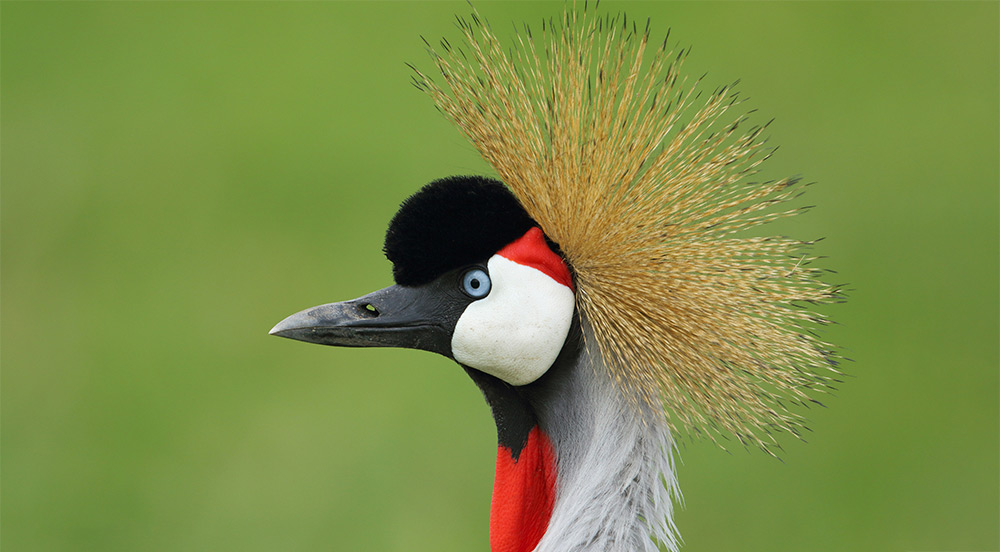
Although extinction is a natural phenomenon, experts have determined that the current rate of bird extinction is somewhere between 1,000 and 10,000 times the background rate. More than 150 bird species are known to have become extinct over the past 500 years, and many more are estimated to have been driven to extinction before they became known to science. The bulk of the recent bird extinctions has been on islands, where species are more susceptible to extermination due to smaller ranges, lower population sizes and a lack of adaptation for coping with introduced predators. All the inhabited continents except Africa have experienced bird extinctions; however the 2012 update of the IUCN Red List shows a startling, but not altogether unexpected, trend in that more and more of our bird species are facing extinction.
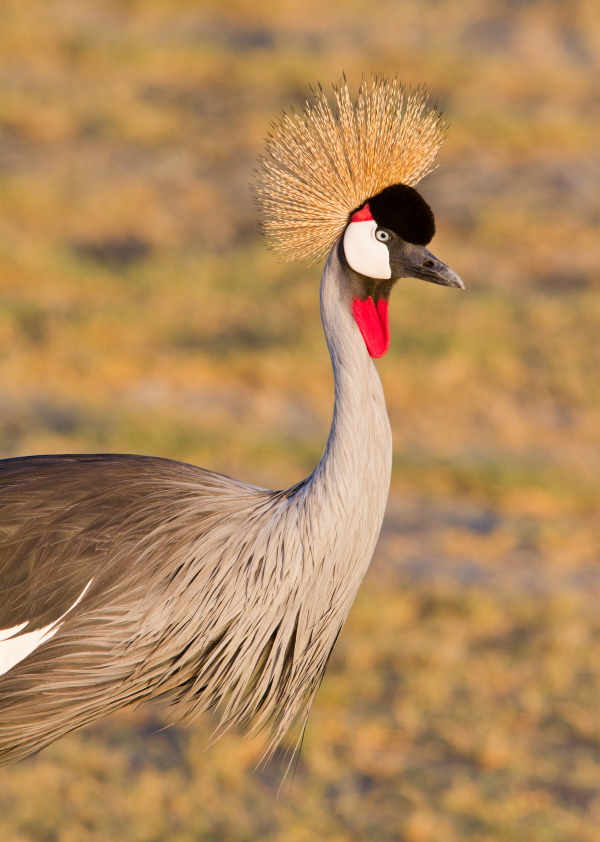
Since 2011, the list of Critically Endangered species (meaning they are facing an extremely high risk of extinction) has risen from 189 to 197, and Endangered (facing a very high risk of extinction) from 381 to 389. Globally, 1,313 bird species of a total of count of 10,064 are threatened, a frightening 13% of the total. Even in Africa, where birds have co-inhabited the landscape with man since the evolution of our species, more and more bird species are joining the ranks of the threatened. New additions to those listed as Endangered include the regal Gray Crowned-Crane (creeping up a category from Vulnerable) and both Rueppell’s and White-backed Vultures which have worryingly leapt two categories from Near-threatened in just a year.
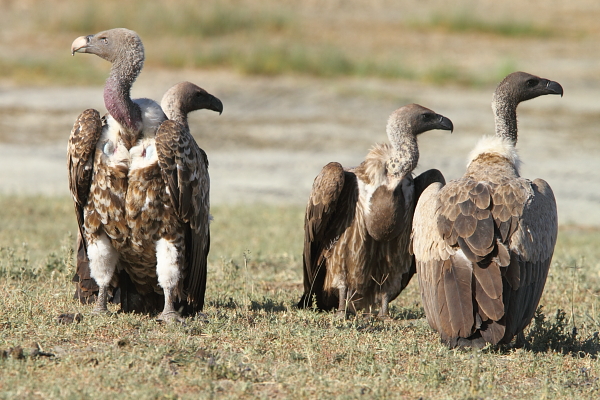
Of the 115 African species now listed as Endangered or Critically Endangered, nearly half occur on the islands surrounding Africa or are non-breeding migrants to Africa. In this blogpost I will discuss ten of the 60 endangered species that are resident on the African continent. They are not necessarily the rarest species in Africa, in fact some of them still occur in large numbers, but their inclusion in the IUCN Red List is due to rapid population declines over the past 3 breeding generations of these species. The reasons that these ten have been selected is to illustrate some of the myriad reasons that Africa’s birds are being driven to extinction; from commercial overfishing, powerline collisions, illegal trade, poisoning, traditional medicine usage, overgrazing and conversion of specialized habitats into agricultural land.
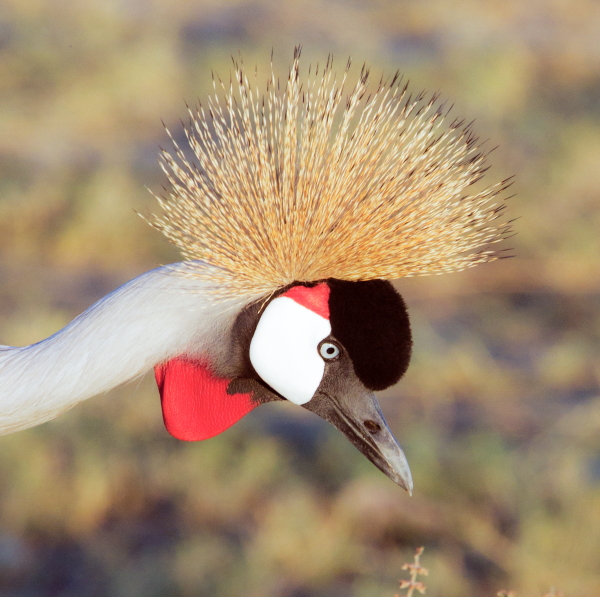
Grey Crowned Crane
Certainly one of the world’s most striking birds with its unique golden plumes, this regal species is well known throughout the world. One of Africa’s truly exhilarating experiences is watching and listening to a honking flock of these massive birds as they appear out of the early morning mists over a wetland, to land nearby and start their wing-flapping and jumping displays. The Gray Crowned-Crane is resident throughout most of southern and east Africa, but its population is estimated to have declined more than 50% over the past 19 years. This species prefers wetlands and its numbers have been decimated due to a combination of habitat destruction caused by human population growth and illegal removal of birds and eggs from the wild for the pet and zoo trade.
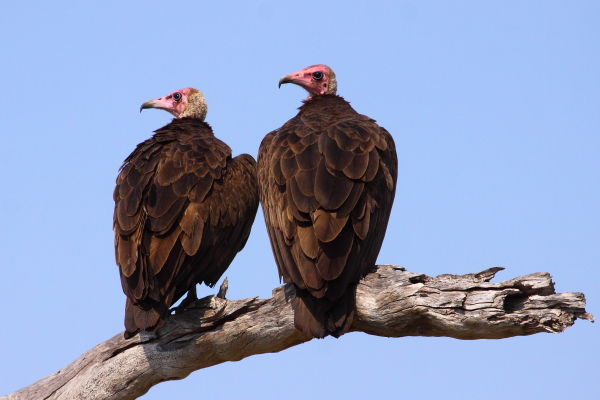
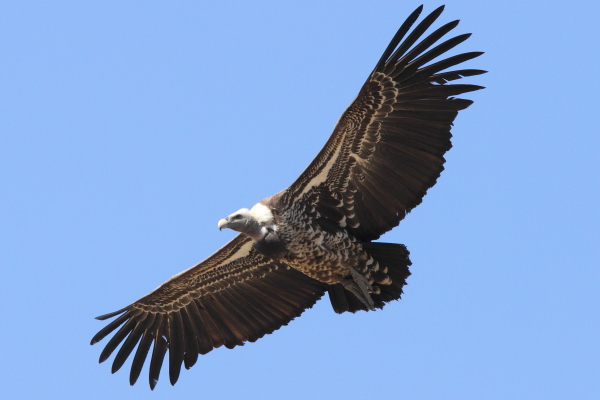
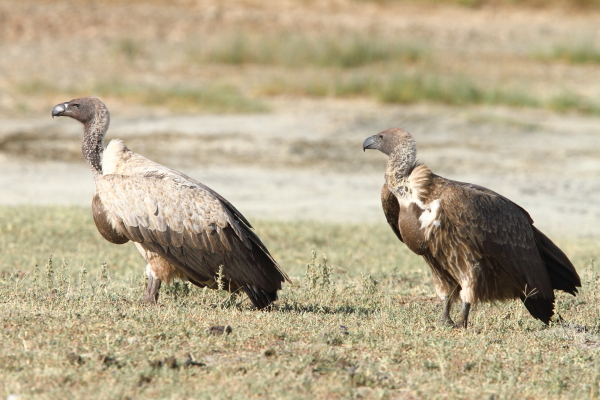
Rueppell’s, White-backed and Hooded Vultures
After Asia’s dramatic vulture crash (some of the species’ populations dropped by over 99% in just a few years due to Diclofenac, a veterinary drug mostly used for treating cattle that is fatal to vultures), Africa’s vultures are now facing the abyss. As mentioned earlier, Rueppell’s and White-backed Vultures are new additions to the list of Endangered species whereas Hooded has been on the list for a number of years. What is interesting is that these three vulture species are actually numerically the most common vultures and most frequently encountered at kills and other food sources, yet they are the species that are facing the greatest population declines and highest risk of extinction. Other rarer vultures such as Lappet-faced, White-headed and Cape are all listed at lesser levels of threat yet occur in much lower numbers. White-backed and Hooded occur throughout most of Subsaharan Africa, but Rueppell’s is restricted to East and West Africa. They have all experienced very rapid population declines due to habitat loss (mostly conversion of savanna to agricultural land), direct persecution, indiscriminate poisoning and the reduction in wild ungulate populations which form the bulk of their diet. In South and West Africa, vultures are also killed for use in traditional medicines, for instance, some cultures believe vultures can predict the future, resulting in vulture body parts being purchased to supposedly assist in accurately predicting lottery numbers!
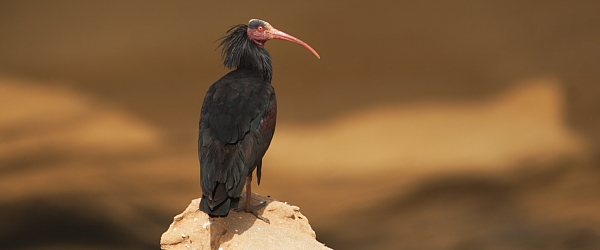
Northern Bald Ibis
The Northern Bald Ibis is classed as critically endangered, the highest risk category assigned by the IUCN Red List for an extant wild species. This is despite the fact that the Northern Bald Ibis was one of the earliest officially protected species, thanks to a decree by Archbishop Leonhard of Salzburg in 1504. This strange but beautifully plumaged bird was widely known throughout Europe as the Waldrapp (meaning “Forest Crow”). It bred in large colonies on cliffs and castle ramparts in southern and central Europe, before it began a relentless march towards extinction. By the 18th century it had disappeared from the whole of Europe and this pattern followed in the Middle East where finally it was only known from a single breeding population at Birecik in Turkey. This colony outlived dozens of others as it was protected by the local religious belief that the ibises migrated each year to guide Hajj pilgrims to Mecca. Around 3,000 birds summered and bred at Birecik in the 1930’s but this declined to only 400 by 1982. By 1986, only 5 wild pairs remained and this dwindled to one bird by 1990, which died the following year. Northern Bald Ibis also occurred in North Africa and many colonies survived in Morocco and Algeria but this tragic pattern continued with the last colony in Algeria vanishing in the 1980’s. In Morocco 38 colonies remained in 1940, 15 in 1975, in 1989 the last migratory population in the Atlas Mountains died out and all that remained into the 1990’s were 4 breeding colonies at two locations on the coast of Morocco that totaled 56 breeding pairs. The Waldrapp’s numbers continued declining despite intensive conservation efforts.
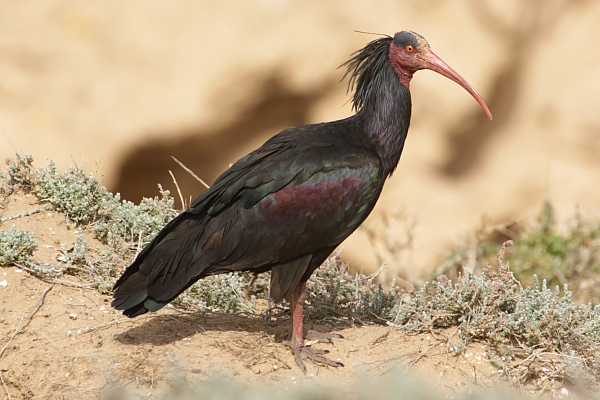
Extinction, driven by loss of feeding habitat, nest disturbance, hunting and poisoning, seemed inevitable. However this fragile and tragic situation has improved due to intensive conservation measures by BirdLife International and other conservation bodies. There has been growth in the breeding population at the colonies in Morocco (now estimated at 106 breeding pairs and approximately 500 birds in total). Then in 2002, the news of a dramatic discovery of a relict colony in Palmyra, Syria, a country where they had been declared extinct for 70 years was greeted with jubilation. Sadly this tiny Middle Eastern remnant has declined from 7 birds at discovery to just a 3 birds that returned to their nesting colony this year. These birds are tagged and migrate to the Sululta Plains on the Ethiopian highlands were they spend their winter. Interestingly, another two younger birds also wintered this season in the area, but the origin of these two vital birds is still a mystery that needs to be unraveled.
A semi-captive population of approximately 100 birds still exists at Birecik in Turkey (they are given freedom during the 5 month breeding season and then held in captivity during the migration/wintering season). Small semi-captive populations also exist in Spain and Austria and a reintroduction program from the Birecik population has been started in Syria.
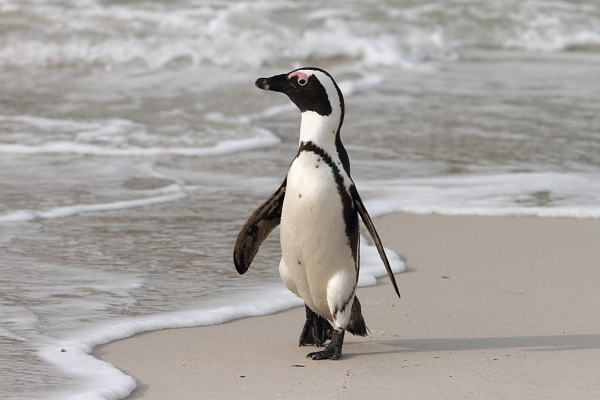
African Penguin
Also known as the Jackass (from its braying call) or Black-footed Penguin, Africa’s only penguin is restricted to the cooler southern section of the continent, breeding at 25 offshore and 4 mainland colonies in South Africa and Namibia. Their population is estimated to have decreased 61% over the past 3 generations, mostly due to food shortages as a result of commercial overfishing by trawlers, and also fluctuations in the populations and ranges of their favored fish species. Most sightings of this penguin are at Boulders Beach near Simonstown, just south of Cape Town, where annually tens of thousands of tourists come to visit the penguins. Interestingly this colony was only established in the 1980’s and is now one of the 7 vital colonies that support over 80% of the African Penguin population. Here they can be easily viewed and are well protected with fenced off nesting areas and pedestrian boardwalks, ensuring that visitors minimize disturbance to the penguins. Just be sure to check under the wheels of your vehicle for penguins before you leave the parking lot……
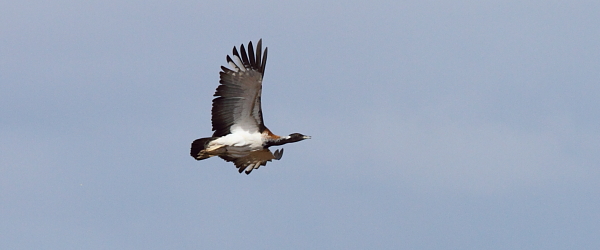
Ludwig’s Bustard
This attractive dry country bustard ranges across western South Africa, Namibia and just into southern Angola. It’s a nomadic species and although its population hasn’t been assessed for 20 years, it is estimated that in South Africa it has undergone a 51% drop in numbers mainly due to collisions with powerlines. This is particularly devastating for a large, long-lived species such as Ludwig’s Bustard, and further infrastructural development of South Africa and Namibia will only result in a worsening of the problem. Habitat destruction, hunting and disturbance are further factors affecting the population. Several powerline marking experiments are in place, and hopefully a workable solution will be found for the main problem affecting this species.
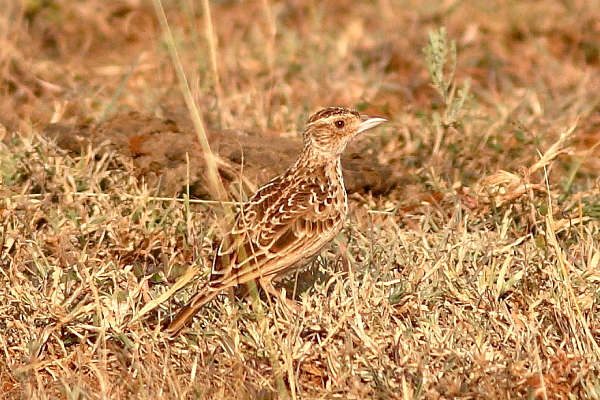
Liben Lark
Previously called Sidamo Lark and currently only known for certainty from the tall grass prairie of the Liben Plains near Negele in southern Ethiopia, this species has a population estimated at less than 250 individuals occupying just 30-36 sq km. This plain used to be little affected by humans, being grazed by just a few cattle, goats and camels. However, over the past few years this situation has changed as thousands of people have moved into the area, driven from surrounding regions by ethnic conflict and droughts. This recent massive increase in human activity has resulted in the cultivation of large sections of the virgin grassland, as well as serious overgrazing of the remainder. This overgrazing, as well as the restriction of the fires which are vital to grassland health and vigor, has further resulted in bush encroachment and other significant habitat modification. Between 2007 and 2009 the population of the Liben Lark decreased 40% and the territory it occupied contracted 38%. It has been proposed that this may be the first bird to become extinct on the African continent, and scientists estimate that it only has two to three years left unless major conservation efforts are undertaken. However a discovery of a population of similar larks near Jijiga in north-eastern Ethiopia, by David Hoddinott on a Rockjumper tour in January 2011, has opened up the possibility that there is a second population of Liben Larks. Alternatively, the birds that David discovered could be a new species or they could be a range extension of the closely related Archer’s Lark that has not been seen since 1922. More discussion of this new population and images can be found on this blog post: https://www.rockjumperbirding.blogspot.com/2011/05/significant-ethiopian-discovery.html
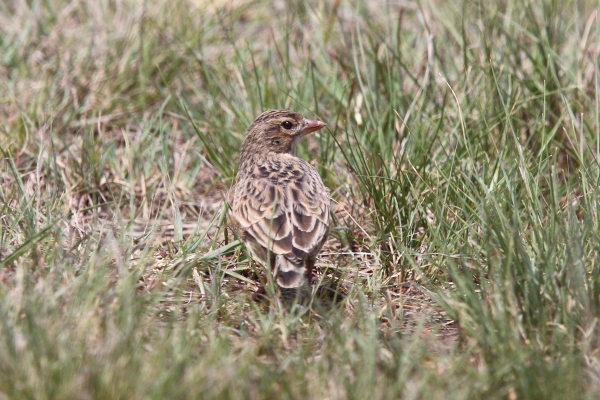
Botha’s Lark
This small, rather plain, pink billed lark is endemic to an area of highland grasslands in east-central South Africa. Over 80% of its range has already been altered as a result of agriculture, and threats to its remaining population (estimated to be between 1,000 – 5,000 birds) include further cultivation, commercial afforestation and mining. It seems to prefer heavily overgrazed and dry grasslands within its restricted range and its breeding success may also be negatively affected by the timing of the burning of grasslands. Very little is known of the movements of Botha’s Larks in the non-breeding season.
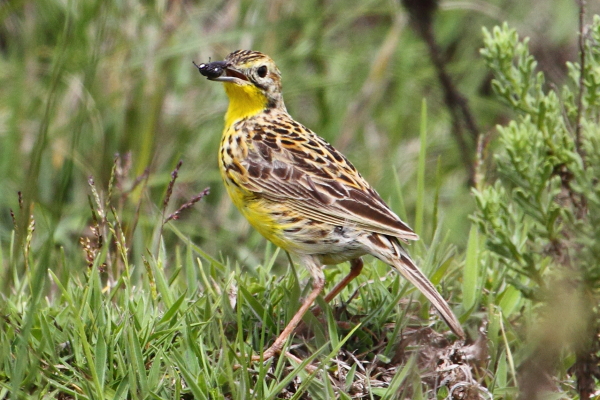
Sharpe’s Longclaw
This attractive species is endemic to Kenya, and occurs in the few remaining, fragmented and isolated regions where high altitude tussock grassland hasn’t yet been converted into agricultural land. Significant human population growth and conversion of natural grasslands by small scale farmers in Kenya have had a devastating impact on this species, causing massive population declines. Some estimates of remaining birds are as low as 2,000 individuals and once again, unless significant areas of tussock grassland are preserved, this species faces the real risk of extinction.
